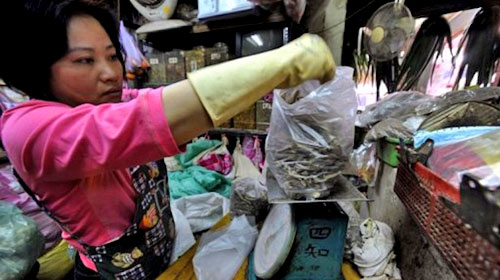|

by Agence France-Presse
December 23, 2012
from
RawStory Website

Scientist in the United States on Sunday offered a molecular-level
explanation for how a Chinese herbal medicine used for more than
2,000 years tackles fever and eases malaria.
The herb is an extract of the root of a flowering plant called
blue evergreen hydrangea, known in
Chinese as chang shan and in Latin as
Dichroa febrifuga Lour.
Chang shan’s use dates back to the Han dynasty of 206 BC to 220 AD,
according to ancient documents recording Chinese oral traditions.
In 2009, researchers made insights into its active ingredient,
febrifugine, which can be
pharmaceutically made as a molecule called
halofuginone. They found that
halofuginone prevented production of rogue Th17 immune cells which
attack healthy cells, causing inflammation that leads to fever.
A study published in the journal Nature on Sunday found halofuginone
works by hampering production of proteins for making “bad” Th17
cells, but not the “good” ones. Specifically, it blocks molecules
called transfer RNA (tRNA),
whose job is to assemble a protein bit by bit, in line with the DNA
code written in the gene.
As for malaria, halofuginone appears to interfere with the same
protein-assembly process that enables malaria parasites to live in
the blood, the study said.
“Our new results solved a mystery
that has puzzled people about the mechanism that has been used
to treat fever from a malaria infection going back probably
2,000 years or more,” said Paul Schimmel, who headed the team at
the Scripps Research Institute in California.
Halofuginone has been tested in
small-scale human trials to treat cancer and muscular dystrophy.
Drug engineers also eye it as a
potential tool for combating inflammatory bowel disease and
rheumatoid arthritis, which are also autoimmune diseases.
|

